|
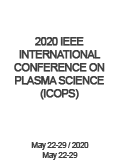
|
 |
|
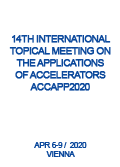 |
 |
|
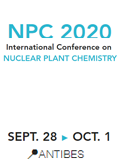
|
 |
|
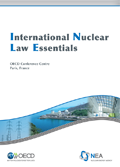
|
 |
|
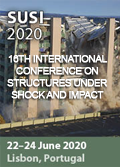
|
 |
| |
 |
| |
| |
|
|
|
|
Si no desea recibir mas este Boletín haga click aqui. |
|
|
|
|
|
|
|
|
|
|
|
|
|
|
|
 |
 |
 |
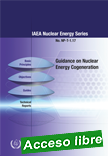 |
Guidance on Nuclear Energy Cogeneration
IAEA Nuclear Energy Series NP-T-1.17
Cogeneration, i.e. the production of electricity and heat, has proven to be a highly efficient and environmentally attractive option for energy conversion. Nuclear cogeneration could be considered as an option in light of actions on climate change. However, nuclear cogeneration is not widely deployed. This publication provides a quick introduction to the advantages, experience, and future planning for implementation of nuclear cogeneration.
|
It also highlights some demonstration projects that were developed in the past in connection with industries, describing technical concepts for combined nuclear-industrial complexes. The publication is intended to be of interest to users in academia and industry as well as government agencies and public institutions requiring basic information on various aspects of using nuclear power for cogeneration.
|
 |
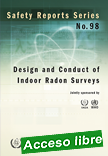 |
Design and Conduct of Indoor Radon Surveys
Safety Reports Series No. 98
This Safety Report draws on the requirements of international standards and the recommendations of international organizations as well as on the scientific literature, together with direct experience from a number of IAEA Member States in relation to carrying out representative indoor radon surveys. The need for and the purpose of representative indoor radon surveys are discussed, as well as the factors that must be considered in designing and carrying out such surveys.
|
How the measurement data obtained from indoor radon surveys can be used to develop radon risk maps is also considered. While the Safety Report is focused specifically on national and regional surveys to evaluate average concentrations of radon in dwellings, many of the same considerations also apply to radon surveys for other types of buildings.
|
 |
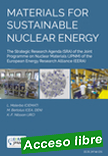 |
Materials for sustainable nuclear energy
The Strategic Research Agenda (SRA) of the Joint Programme on Nuclear Materials (JPNM) of the European Energy Research Alliance (EERA) - Study
With a yearly production in excess of 850 TWhe, nuclear energy is the sin-gle largest source of low-carbon electricity in the EU. Consistent with this, the 2 degree IEA scenario concludes that the worldwide nuclear energy production should increase from 11% in 2015 to 16%/15% in 2050/2060. Thus, nuclear energy plays an important societal role, together with renewables, in the energy transition from fossil fuels.
|
Yet, three main open issues remain: (1) sustainable and responsible use of resources; (2) accident risk; and (3) long-lived nuclear waste. The sustainability of nuclear energy will be ensured by deploying Generation IV (GenIV) systems. These can (i) produce more fuel than they consume, guaranteeing low-carbon energy production for centuries through recycling, without additional mining, in a circular economy; (ii) offer ~50% higher thermal efficiency and increased standards of passive safety than current reactors, thereby becoming both societally and economically attractive; and (iii) reduce significantly the volume and radiotoxicity (decay time < 1000 years) of nuclear waste. However, materials will be exposed to high levels of temperature and irradiation, with some in contact with po-tentially aggressive non-aqueous coolants, targeting a 60 year operation reactor design. Thus, the development, screening and qualification of suitably performing and affordable materials are crucial to make GenIV reactors an industrial and commercial reality, with positive impacts on economy, safety, waste, and thus sustainability of nuclear energy. This Strategic Research Agenda (SRA) has been prepared by the EERA-JPNM, based on a wide consultation with the scientific and industrial community involved, to identify the research lines to be pursued in the EU to ensure that suitable structural and fuel materials are available for the design, licensing, construction and safe long-term operation of GenIV nuclear systems. Emphasis has been put on the fast neutron spec-trum systems considered in the European Sustainable Nuclear Industrial Initiative (ESNII), namely sodium-cooled fast reactor (SFR), heavy liquid metal (HLM) cooled systems (accelerator driven systems –ADS- and lead-cooled fast reactor –LFR-), and gas-cooled fast reactor (GFR). However, links with other GenIV systems, namely (very) high temperature reactor ((V) HTR), supercritical water reactor (SCWR), and molten salt reactor (MSR) have been established. Effort has been devoted to identify GenIV materials’ re-search issues that are of interest for other nuclear and also non-nuclear energy technologies, as well. This was done with a view to optimise the use of available facilities, knowledge and human/financial resources, whenever possible, by joining forces with other research communities. Importantly, the content of this SRA is consistent with relevant strategic documents and roadmaps that have been compiled by linked organisations and platforms (SETPlan integrated roadmap, OECD/NEA technology roadmap, SNETP SRIA, …), of which it is an updated extension for what concerns materials for sustainable nuclear
|
 |
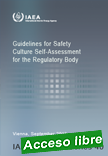 |
Guidelines for Safety Culture Self-Assessment for the Regulatory Body
IAEA Services Series No. 40
The objective of this publication is to provide guidance for regulatory bodies on how to perform SCSAs. The information provided will be of practical value to regulatory bodies trying to improve their own safety culture and will enhance the effectiveness of their safety culture oversight efforts. The publication is based on Safety Reports Series No. 83 [3] and complements it for use by regulatory bodies. |
Safety Reports Series No. 83 [3] should be used in parallel with these guidelines for more details on procedures, the methodology and its application, as well as for background knowledge to obtain a deeper understanding of the subject. It addresses the role to be played by senior managers, the team that prepares and executes an SCSA and the staff members who are interested or will be involved in the self-assessment process.
|
 |
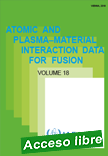 |
Atomic and Plasma–Material Interaction Data
vol 18
The present volume of Atomic and Plasma–Material Interaction Data for Fusion presents the results of a coordinated research project (CRP) on plasma-wall interaction with irradiated tungsten and tungsten alloys in fusion devices. The chemical element tungsten is widely foreseen as a plasma-facing material in a fusion reactor, where it is subject to an intense neutron radiation flux. This publication provides details of a 5-year project devoted to better understanding the properties of tungsten in this environment through experimental study and theoretical modelling. |
Of particular practical concern is the viability of the metal as a structural material after irradiation damage, and its increased propensity to absorb the tritium fuel used in a fusion reaction.
|
 |
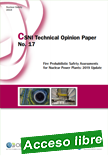 |
CSNI Technical Opinion Paper No. 17
Fire Probabilistic Safety Assessments for Nuclear Power Plants: 2019 Update
CSNI Technical Opinion Paper No. 17: Fire Probabilistic Safety Assessments for Nuclear
Power Plants: 2019 Update provides an authoritative review of the current status and
use of the fire PSA in nuclear power plants. The report demonstrates that while fires
at a particular plant site are highly dependent on plant and site specific factors, they
are nonetheless an important contributor to overall risk. Insights from fire PSAs are
generally found to be aligned with operating experience and to be representative of
the expected plant response, making them valuable in addressing risk.
|
This report
should be useful for regulators overseeing the use of fire PSAs in nuclear installations,
practitioners in understanding the considerations for performing or reviewing fire PSAs,
and researchers in identifying areas requiring further study.
|
 |
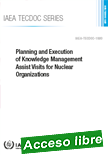 |
Planning and Execution of Knowledge Management Assist Visits for Nuclear Organizations
IAEA TECDOC No. 1880
This publication provides a basic structure and common reference for knowledge management assist visits (KMAVs). As such, it is written primarily for the team members of KMAVs and the counterpart requesting a visit. However, the publication also provides a valuable reference for other IAEA peer review services. The publication provides guidelines across the various activities inherent in KMAVs.
|
Specifically ,KMAVs facilitate the transfer of pragmatic knowledge management methodologies and tools, assist Member States considering implementation of nuclear power programmes to integrate KM into their management system, provide specific consultancy services to address emergent problems and long-term issues related to KM, assist organizations in formulating detailed requirements and action plans related to KM and help organizations identify their own KM maturity levels against a set of pre-defined criteria through a self-assessment exercise.
|
 |
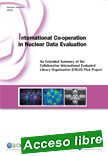 |
International Co-operation in Nuclear Data Evaluation
An Extended Summary of the Collaborative International Evaluated Library Organisation (CIELO) Pilot Project
Current knowledge of the nuclear physics of fuels and materials provides an understanding and simulation of the operations of nuclear reactors and other systems, both under ordinary and exceptional circumstances. As part of a broad spectrum of collaborative activities underpinning research in basic nuclear sciences, the Nuclear Energy Agency (NEA) is supporting collaboration betweenexperimentalists, theoreticians and modelling experts to advance the state of the art in nuclear data.
|
This report offers an overview of collective results from 31 institutions in 15 NEA member countries, along with results from technical experts in the People’s Republic of China, in the context of the NEA Collaborative International Evaluated Library Organisation (CIELO) Pilot Project. It reviews recent developments resulting from new measurements and semi-empirical models, as well as the validation of the CIELO nuclear data evaluations against suites of systems representing a wide range of current and future nuclear facilities. The CIELO project has delivered new, evaluated data for the isotopes of uranium, plutonium, iron, oxygen and hydrogen, which have been adopted in all nuclear data libraries released since the CIELO project was completed.
|
 |
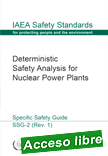 |
Deterministic Safety Analysis for Nuclear Power Plants
IAEA Safety Standards Series No. SSG-2 (Rev.1)
Deterministic safety analysis is an essential component of safety assessment, particularly for safety demonstration of the design of nuclear power plants (NPPs). The objective of deterministic safety analysis is to confirm that safety functions can be fulfilled and that the necessary structures, systems and components, in combination with operator actions, are effective in keeping the releases of radioactive material from the plant below acceptable limits.
|
Deterministic safety analysis, supplemented by further specific information and analysis, including probabilistic safety analysis, is also intended to demonstrate that the source term and the potential radiological consequences of different plant states are acceptable, and that the possibility of certain conditions arising that could lead to an early or a large radioactive release can be considered as ‘practically eliminated’. The publication has been updated to maintain consistency with current IAEA safety requirements and to reflect lessons from the Fukushima Daiichi accident. It takes into account current practices and experience from deterministic safety analyses for NPPs being performed around the world.
|
 |
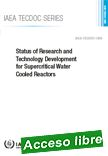 |
Status of Research and Technology Development for Supercritical Water Cooled Reactors
IAEA TECDOC No. 1869
There is considerable interest in both developing and developed countries in the design of innovative water cooled reactors (WCRs) and, owing to the higher thermal efficiency and significant system simplifications, supercritical water cooled reactors (SWCRs). Compared to conventional WCRs the SCWR concept requires extensive, comprehensive research and development (R&D).
|
Fundamental research in understanding important phenomena has been completed successfully in providing information required for the next step of development. Currently, a few concepts have been assessed as being technical feasible, and several other concepts are under development. These concepts are described in this publication, together with detailed analysis of remaining gaps requiring future R&D.
|
 |
| |
|
|

|
|
|
| |
|
|
| |
| |
|
|
| |
| |
|
|
| |
| |
|
|
|
| |
| |
|
|
|
|
